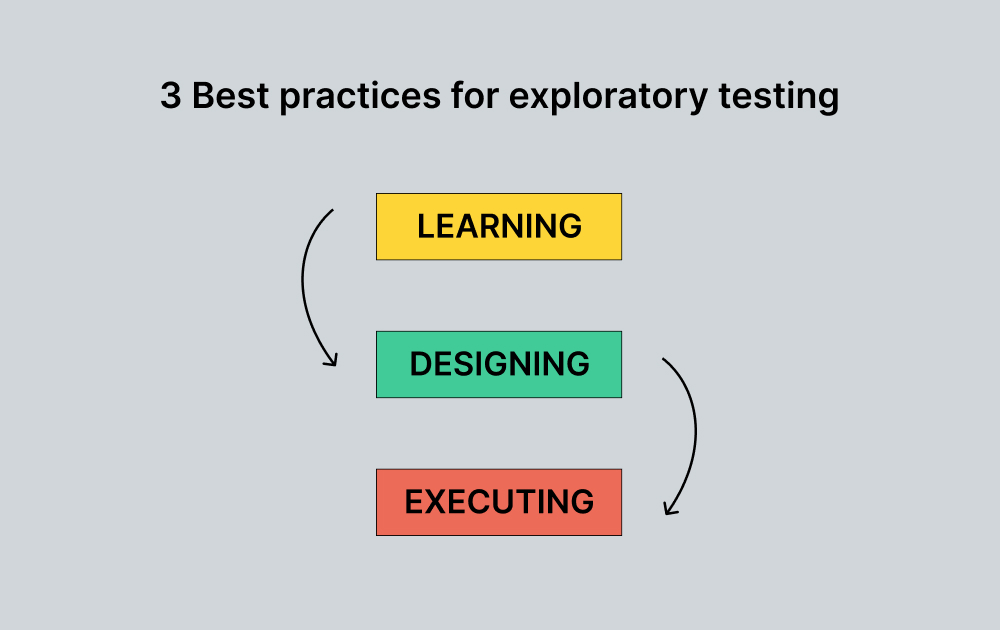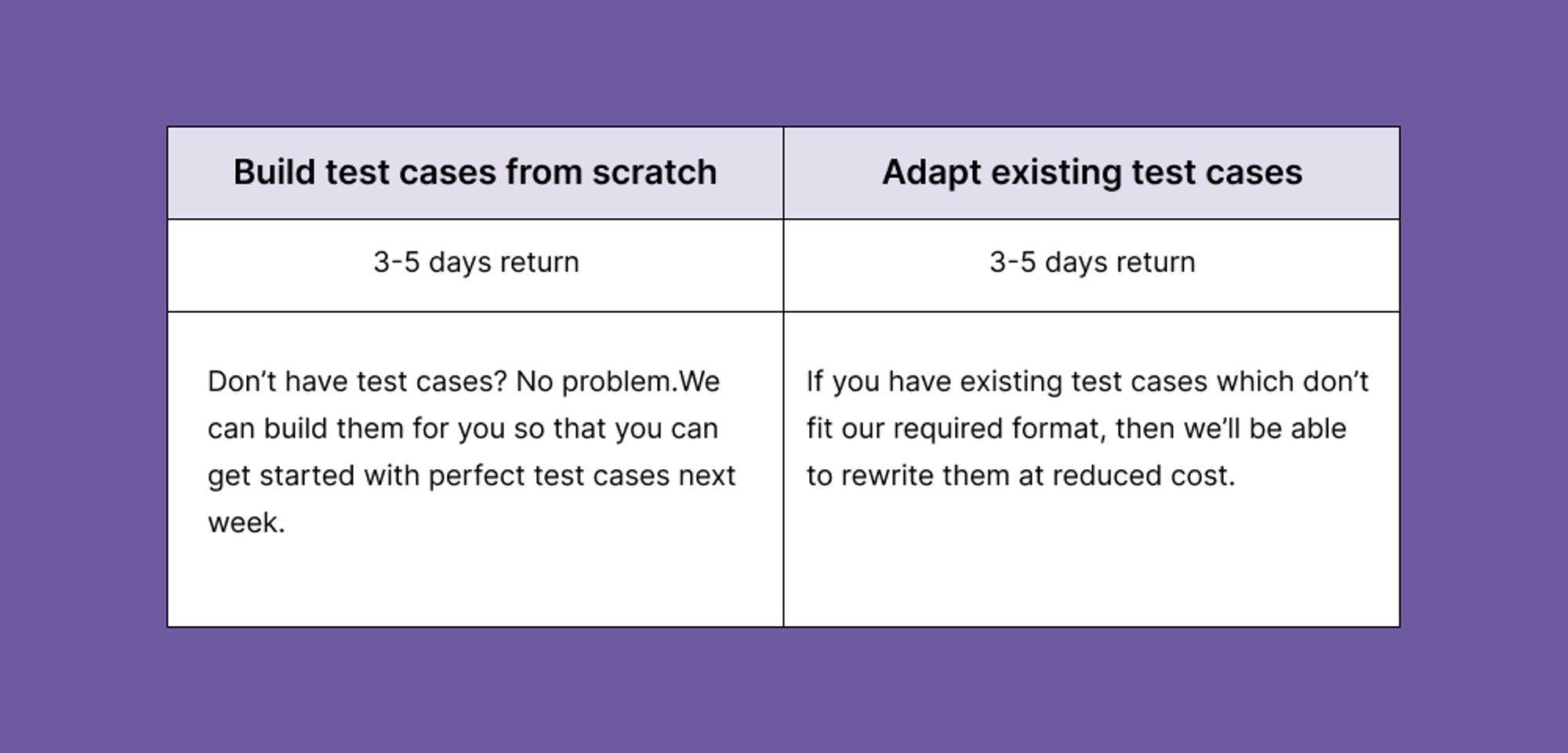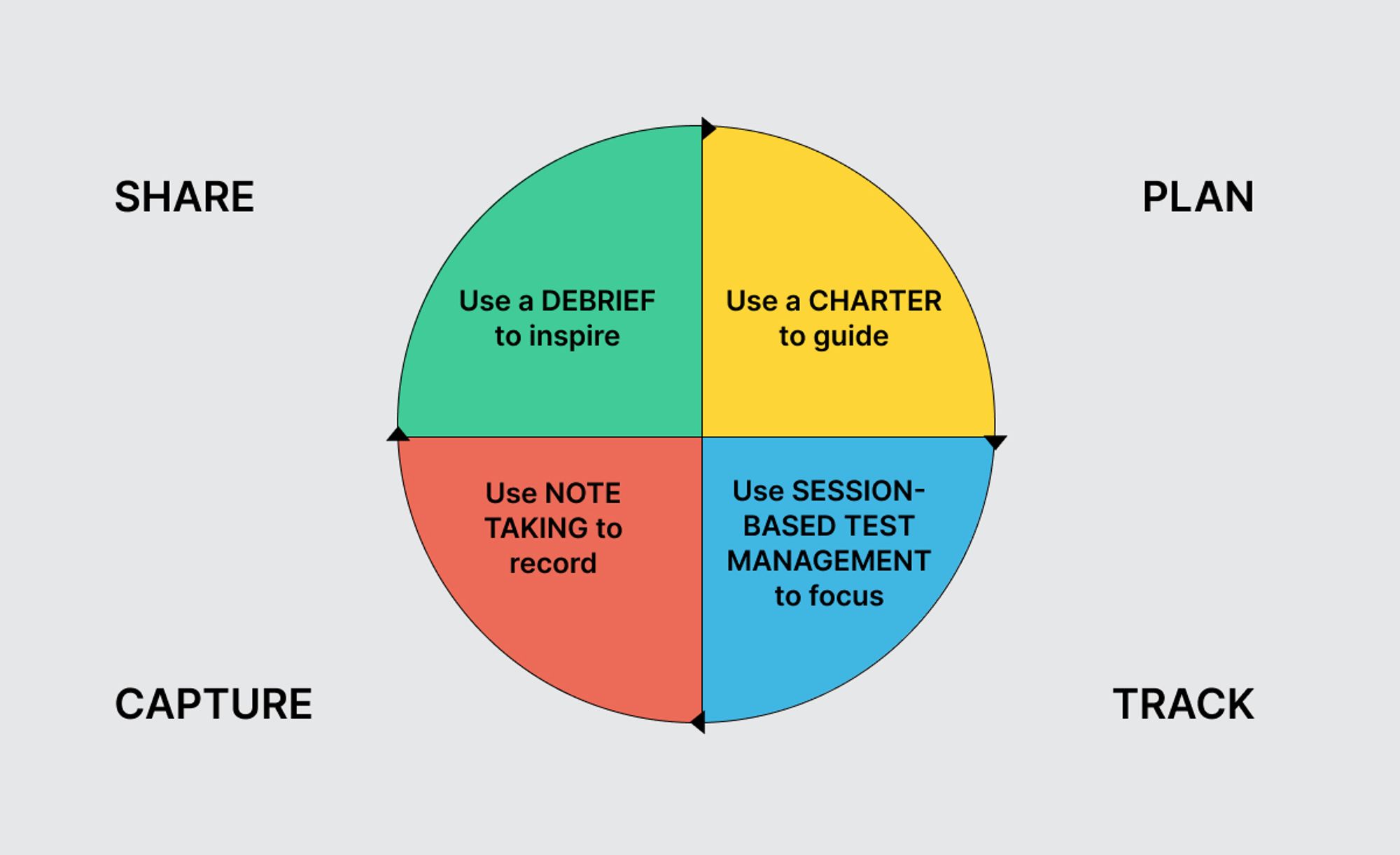Best Practices for Exploratory Testing
What is exploratory testing? How can this software testing method drive growth and help you discover more bugs? Find out in this ultimate guide.
Check out our exploratory testing commercial page or subscribe to our content using the form below.
Exploratory testing is like the treasure hunt of software testing – a thrilling dive into the unknown where curiosity leads the way. Unlike traditional tests with maps and checklists, exploratory testing empowers testers to navigate freely, using their instincts and insights to uncover hidden bugs.
It's an adventure that combines the thrill of discovery with the satisfaction of solving puzzles, making each session a unique journey into the software's depths. This approach finds the bugs that scripted testing might miss and deepens our understanding of how the software truly behaves. Keep reading to find out the best practices for exploratory testing, its benefits and advantages, along with best tools you can use.
What is exploratory testing?
As the name suggests, exploratory testing is about testers exploring an application to identify and document potential bugs. Testers embark on investigation and discovery to test a product effectively. In exploratory testing, testers have the freedom to run tests how and when they decide. Thus, there is a simultaneous process of test design and test execution.
Best practice exploratory testing answers the following questions:
- Does the app perform the function it was designed for?
- Does the app work under multiple scenarios?
- Is the app performance good enough?
- What potential bugs are there?
3 best practices for exploratory testing
Best practice exploratory testing has three main components:
- Learning
- Designing
- Executing

1. Learning
In order to test an app or website efficiently, testers need to be extremely knowledgeable about the platform they are testing. This also includes gaining insights into relevant industry trends, company specifics, and competitors' data, which equips testers with the necessary context to conduct thorough testing.
Central to the process of exploratory testing is the act of learning; it's not merely about grasping the functionalities of the software but also comprehending its purpose and the target audience it serves. Such knowledge empowers testers to predict potential issues and pinpoint sections where the application may fall short of meeting user expectations or requirements.
2. Designing
A big difference between exploratory testing and scripted testing is in design. Scripted testing has specific parameters or rules, whereas exploratory testing has no preset path or predetermined conditions.
Exploratory testers can conduct tests in a way they deem fit. As a result, tests are designed frequently and freely, meaning designing is a key skill for an exploratory tester. Therefore, you need to ensure you have professional testers with varied skill sets who can design effective test cases. This phase is about strategizing how to maximize information discovery during the execution phase, yet being prepared to adjust the plan based on new insights and discoveries.
Pro tip
At Global App Testing, we specialize in creating and adapting test cases to streamline your software testing process. Whether you need new test cases or adjustments to existing ones, our team is equipped to deliver high-quality solutions.

We also provide seamless integration with platforms like TestRail, GitHub, and Zephyr Squad, facilitating easy deployment and management of your test cases.
3. Executing
Efficient and uninterrupted test execution is a crucial best practice in exploratory testing. In this approach, testers have the autonomy to initiate a test immediately after its conception. This immediacy eliminates delays associated with waiting for scripted requirements, allowing for a more fluid and continuous workflow.
The testing process is iterative, with testers often revisiting the learning and design phases as they discover new information. This cyclic process ensures that their testing strategy stays pertinent and effective, adapting to new insights and findings as the test progresses.

Do’s and don'ts of exploratory testing
1. Ensure sufficient testing coverage
Monitor and expand your testing coverage by linking exploratory tests to requirements, use cases, and user stories. Utilize traceability matrices to ensure no area is left unexplored.
2. Document everything
Record all ideas, test cases, and defects discovered. Documentation helps in ensuring thorough testing and effective communication of bugs and observations for future reference.
Failing to document findings and ideas can lead to missed bug fixes and improvement opportunities.
3. Combine with other testing methods
Use exploratory testing alongside manual and automated testing to uncover broader issues, leveraging each method's strengths.
4. Set clear goals
Avoid aimless testing; always have a clear objective for each session to guide your exploration effectively. For example, use test charters to guide your focus and ensure productivity.
5. Look beyond requirements
Use requirements as a guide but explore beyond them to uncover potential defects that may not be directly tied to documented criteria.
6. Prioritize testing based on risks
Identify and focus on areas with the highest risk of issues, using insights from stakeholders, documentation, and project knowledge. Ignoring potential risks can result in missed critical defects.
7. Embrace Continuous Improvement
Stay informed about the latest testing practices and technologies. Resist complacency by continuously seeking new knowledge, skills, and tools to improve your exploratory testing practices.
8. Leverage automation
Integrate automation tools to enhance the efficiency of exploratory testing, allowing more time for in-depth exploration.
9. Involve the whole team
Encourage a culture of quality across your team by involving everyone in exploratory testing sessions and sharing insights.
10. Debrief sessions
Share and discuss findings in debriefing sessions to leverage collective insights and make informed decisions on product improvements.
11. Utilize tools
Use tools for screenshots, screen recording, note-taking, mind mapping, and API requests to augment your testing capabilities.
Exploratory testing example
Let's imagine you want to test a mobile gaming app. If you decided to use exploratory testing, testers from around the world would be given very general scenarios to test. For instance, within a gaming app, it is typical for users to utilize tokens or in-game inventory items before engaging in a battle. Exploratory testing would involve a tester verifying the functionality that allows a player to use these items and successfully complete a battle as intended.
In this context, exploratory testing is characterized by the simultaneous creation and execution of tests as testers navigate through the game, encountering various in-game situations. Despite the structured approach to defining the general scenarios to be tested, testers enjoy considerable flexibility in their approach to exploring the app.
Such testing methodologies cannot be fully replicated through automation. While a script might confirm the availability of tokens or inventory items for purchase, it cannot mimic the nuanced actions of a human engaged in battle. The unpredictability of certain tests, such as those involving battles in the game, underscores the significance of human creativity and insight in ensuring the effectiveness of exploratory testing.
Advantages of exploratory testing
-
Finding more bugs: A significant benefit is that exploratory testing finds bugs that automation simply cannot. Automated tests are limited to the test cases that are written for them. They won't test any bugs outside of this scope.
-
Speed of the test cycles: Exploratory testing doesn't require extensive planning. The scope of a test cycle needs to be clear, but detailed test cases are not required. That's because testers are trusted to test what they believe needs testing. In comparison, automated tests are fast in test execution but can be time-consuming to plan.
-
Idea generation: The creativity required of testers and the fast pace of Exploratory Testing means that more ideas are created.
Disadvantages of exploratory testing
-
Getting it right is difficult: As previously mentioned, exploratory testing relies heavily on the testers. It can be an expensive and challenging skill to acquire, so you may find it difficult to find the exploratory testers you are looking for.
-
Measuring ROI can be tricky: Measuring the success of exploratory testing in the short term can prove difficult. Think of running a marathon - you can't train ten hours per day a week before the race and expect to do well. It takes months of regular training to be successful. Exploratory testing is the same. Long-term consistency will generate better results than short-term intensity.
Exploratory testing tools
- Test automation software: While exploratory testing leans heavily on manual efforts, incorporating test automation software can streamline the process by handling the more monotonous or labor-intensive tasks. This approach allows testers to dedicate more time to creative exploration. Automated regression testing, for instance, can run concurrently, letting explorers delve deeper without worrying about routine checks.
- Debugging tools: Using debugging tools during exploratory sessions enhances the tester's ability to pinpoint and analyze defects quickly. These tools are invaluable for drilling into the code to understand the root cause of unexpected behaviors, facilitating a more efficient troubleshooting process.
- Record and Playback tools: These tools are a boon for testers, enabling them to capture their interactions with the software and replay them with precision. This capability is crucial for automating regression tests and crafting reproducible scenarios that can be used to verify fixes or further explore potential issues.
When should you use exploratory testing?
We have discussed what exploratory testing is and the advantages and disadvantages of the technique, but how do you know when you should actually implement exploratory testing? Here are the top 5 scenarios where exploratory testing can greatly benefit your testing strategy.
- You're not sure what tests to run.
- You want to diversify the testing process after a cycle of scripted testing.
- You need to receive rapid feedback on a product.
- You want to understand the ins and outs of a new release quickly.
- You tend to find more bugs!
How can Global App Testing help?
Whether you're uncertain about which tests to run, looking to diversify your testing approach, needing rapid product feedback, or simply striving to find more bugs, Global App Testing can significantly contribute to achieving your goals. We provide access to more than 90,000 professional testers from around the globe, bringing diverse perspectives and testing environments to your project. This diversity is crucial for exploratory testing, as it ensures various testing scenarios and user interactions, helping uncover issues that scripted testing might miss. Moreover, with Global App Testing, you can expect:
- Rapid deployment: Quickly mobilize a team of experienced testers tailored to your project's needs, enabling fast and effective exploratory testing cycles.
- Global reach: Leverage the power of testers from various locations and with different backgrounds to test in real-world conditions, ensuring your application performs well across all user segments.
- Insightful reporting: Receive detailed, actionable insights that go beyond bug reports. Our platform and testers provide comprehensive feedback on usability, performance, and potential improvements, making it easier to prioritize development efforts.
- Flexibility and Scalability: We adjust to your project size and complexity, whether you're testing a minor feature or a major release, offering scalable solutions that match your exploratory testing needs.
Don't let bugs slow you down. Accelerate your testing with our global network of professionals. Sign up for a quick call with our QA specialist today!
FAQ
Who should perform exploratory testing?
Exploratory testing can be performed by anyone with a thorough understanding of the software's intended functionality and user scenarios. However, it benefits from testers with strong analytical and investigative skills.
When should exploratory testing be used?
Exploratory testing is beneficial in the early stages of development, for testing complex or poorly documented features, and whenever there is a need for rapid feedback. However, it can be incorporated at any stage of the software development lifecycle.
What's the difference between scripted tests and exploratory tests?
Unlike traditional scripted testing, exploratory does not restrict testers to a predefined set of instructions. Test cases are not written beforehand so the tester can learn and iterate throughout the process. This makes exploratory testing unique and extremely valuable, as testers can use their creativity to discover bugs the software developer may not have ever expected.
How does exploratory testing fit into Agile methodologies?
Exploratory testing aligns well with Agile principles, emphasizing rapid feedback, collaboration, and adaptability. It can be seamlessly integrated into agile workflows, often conducted in parallel with development activities.
Keep learning
6 QA testing methodologies and techniques in 2024
10 types of QA testing you need to know about
15 Tips to write functional test cases
Need help with exploratory testing?
We’d love to give you a personal demo of our platform. Find out how we manage, execute and analyse exploratory test results to help you release high quality software anywhere in the world.
